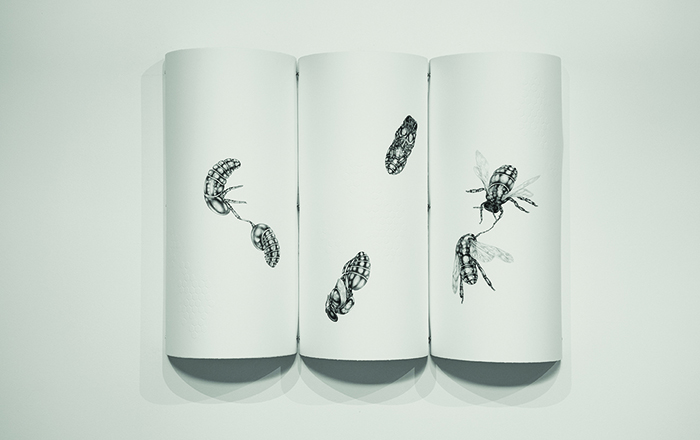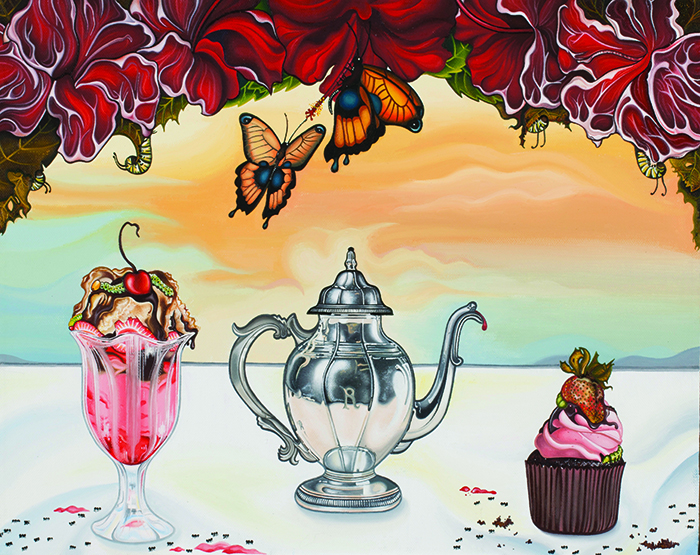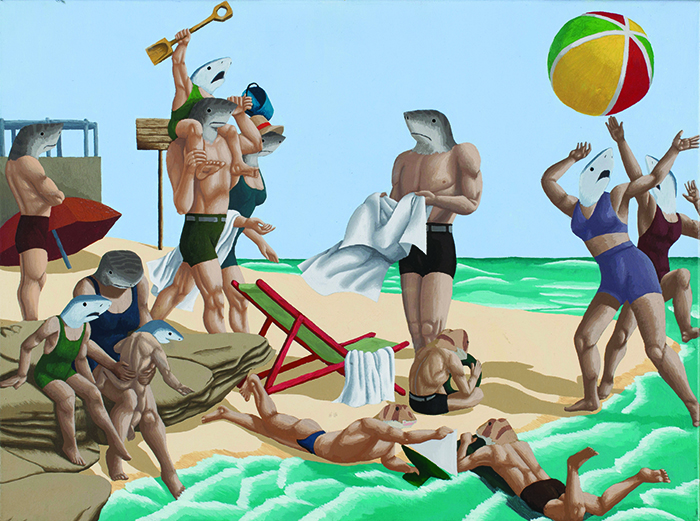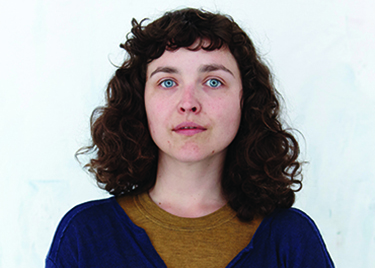Year 12 Perspectives is more than just an exhibition: it’s also a once-in-a-lifetime experience for the students involved.
As you walk up the Art Gallery of Western Australia's central spiral staircase, you may notice a flurry of people, young and old, streaming into one of the gallery's exhibition spaces. No, the crowd isn't viewing the mystical and enlightening Perth International Arts Festival exhibition Rebirth – it's there for Year 12 Perspectives, an annual exhibition featuring the best in art by WA's young and upcoming artists.
"Perspectives is the most visited exhibition at AGWA," says WA artist and past entrant Tane Andrews. "It places young artists' works in the State Gallery, which is an amazing opportunity – most West Australian artists spend their whole lifetime trying to exhibit their work there."
Being a finalist in the 2004 exhibition has had a profound effect on the artist's career. Tane's submission – a self-portrait created from collaged images that had
then been digitally altered – won him a travel grant to Japan. He has since exhibited at a number of Australian galleries, and been offered an Artspace Artsource residency in Sydney
"Perspectives opened doors, in that it introduced me to the practice of application writing, exhibiting my work to a wide audience, and meeting other young creatives," Tane says. "I think the exhibition is beneficial because it gives you a sense of pride, and the hunger to keep applying for other exhibitions and group shows."

The Cycle (36hrs, 14mins, 2secs) 2011, by Tane Andrews. Pencil,
ink and watercolour on paper, 76x33 cm each panel (triptych).
City of Perth Collection (photography Romain Duquesne).
The event is an opportunity revelled in by many a 17-year-old, holding its own against large, internationally acclaimed exhibitions. For most, it will be their very first exhibition; for others, it's the chance to showcase their work alongside the likes of Mariko Mori, William Kentridge and the State Art Collection.
"In my experience, I can say the benefit of being part of Perspectives was having my work in a space (AGWA) that considers and treats young artists and their practice in the same manner as established, local, interstate, and international artists within the collections," says 2003 entrant Gian Manik. "That was important for me, growing up, as I would visit the gallery and see works I felt contributed to my vocation."

Feast of Faust (2014) by Holly Langford, St Mark's Anglican Community School. Oil on canvas, 40.5x51cm.
"It is quite a symbolic event, with students on the precipice of adulthood seeing themselves within a broader context for the first time," says Teelah. "I think being
a part of Perspectives offers insight into the exhibition process, which, until you actually participate in one, is totally unknown. The students may have been to exhibitions in the past, but you really only see the tip of the iceberg when you go to a show as a patron." Through the exhibition process, Teelah says the Year 12s will communicate with curators, conservators, administrators, photographers and other arts professionals.
She says the experience instills confidence in the next generation of homegrown artists, who may not know where to begin within the highly competitive industry.
"Art is a funny thing – it is something we are encouraged to do so wholeheartedly growing up, and then, at about Year 12, the encouragement often makes way for what is referred to as 'real life', as if art exists outside of reality. The benefit of Perspectives is that it offers genuine encouragement, and reminds both students and the public that art is a valuable part of our cultural context."

Man eater (2014) by Joshua Nairn, Perth Modern School. Acrylic and gouache on canvas, 45.5x61cm.
 TEELAH GEORGE
TEELAH GEORGE
Teelah reveals how the judging panel selected for this year's Perspectives.
Run us through the selection process. Being a secondary education context, I was concerned the process would be more contrived or structured, but it was actually very intuitive, which was a great relief. The panel included a teacher, a curator from AGWA, and myself at the showgrounds. We had a brief discussion and then looked at the work, separately and then as a group, sharing our opinions at the end.
What did you look for in each piece? I think no matter how diverse the work may be, what stands out to me is this sense of completeness. It's a tricky thing to explain – for me, it is about knowing when to stop and work with the materials, not simply control them; it's a certain sensitivity that comes when you really spend time experimenting.
How do you know that these ideas are not copied or ripped off other artists? Someone once told me all good art is personal. It sounds pretty simple but it was profound for me, and I think you can tell if something is personal the same way you can tell if someone is lying. You get a sense if the artist is genuinely excited about something or just going through the motions. Art is like a conversation, the topics are perpetually recycled but it's the subtle differences in opinion, execution and context that make it original.
How does the exhibition reach a wider, broader audience than other art exhibitions? Perspectives has a reach that extends beyond the usual patrons, due to the fact that the parents, friends and relatives get involved. Introducing new people to cultural activities that require active participation is always enriching, I think, regardless of whether they like or hate what they are seeing.